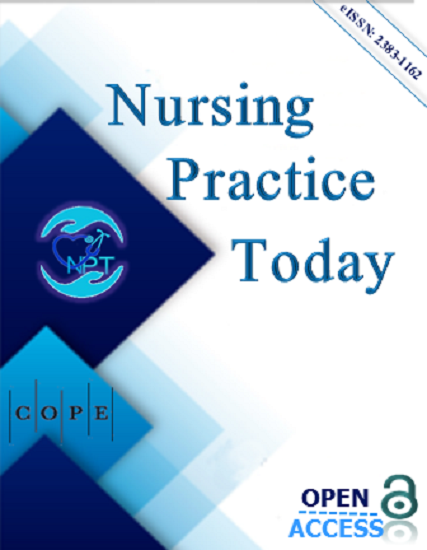2024 Impact Factor: 1
2024 CiteScore: 1.9
pISSN: 2383-1154
eISSN: 2383-1162
Editor-in-Chief:
Reza Negarandeh

This journal is a member of, and subscribes to the principles of, the Committee on Publication Ethics (COPE).


Articles in Press
Background & Aim: Nurse-physician collaboration is a fundamental component of interprofessional healthcare, where nurses and physicians share responsibilities and work-related goals to improve patient outcomes. This study aims to assess nurses' perceptions of nurse-physician collaboration in the emergency departments in Gaza Governorate, Palestine.
Methods & Materials: A cross-sectional study was conducted between January and April 2023, involving a census sample of 205 emergency department nurses working in Ministry of Health hospitals. Data were collected using the Jefferson Scale of Attitudes toward Physician–Nurse Collaboration, a 15-item questionnaire that quantifies these attitudes in a meaningful way. Higher scores indicate a more positive attitude toward interprofessional collaboration. Four domains (shared education and collaboration, responsibility and role expectations, nurses’ autonomy, and physicians’ authority) represent the intricate factors that influence IPC in Ministry of Health hospitals. A validated self-administered questionnaire was employed.
Results: The findings revealed a high level of nurse-physician collaboration in governmental hospital emergency departments in Gaza, with an overall weighted mean of 78.4%, indicating a positive perception among nurses. Among the four dimensions of nurse-physician collaboration, nurse autonomy ranked highest (88.2%), followed by responsibility and role at 87.9%, and shared education & collaboration at 87.3%. However, physician authority ranked lowest, with a relative weight of 50.0%, suggesting a perceived imbalance in decision-making authority within emergency departments.
Conclusion: The study highlights a strong positive attitude toward nurse-physician collaboration among nurses in Gaza’s governmental hospital emergency departments. However, the low perception of physician authority suggests the need for further investigation into interprofessional dynamics.
2024 Impact Factor: 1
2024 CiteScore: 1.9
pISSN: 2383-1154
eISSN: 2383-1162
Editor-in-Chief:
Reza Negarandeh

This journal is a member of, and subscribes to the principles of, the Committee on Publication Ethics (COPE).



 |
All the work in this journal are licensed under a Creative Commons Attribution-NonCommercial 4.0 International License, which permits any non-commercial use, sharing, adaptation, distribution and reproduction in any medium or format, as long as you give appropriate credit to the original author(s) and the source. |
